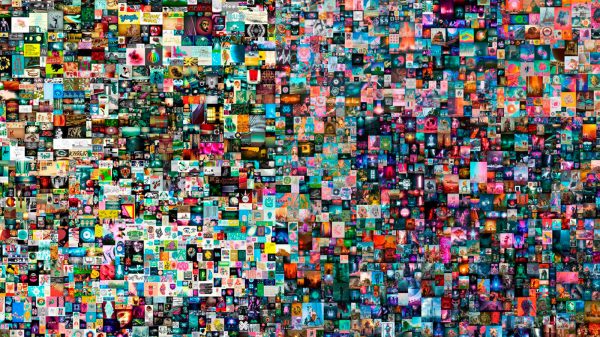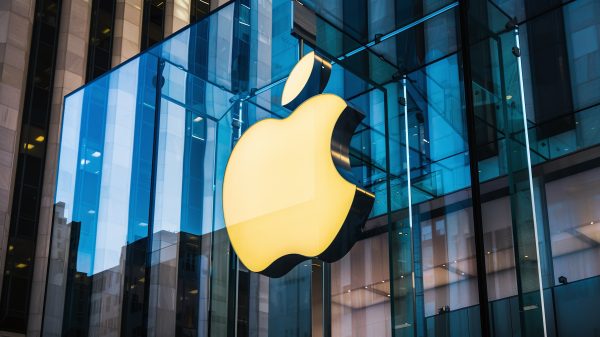Generative artificial intelligence has stopped being a promise of the future and has become the operational engine of content creation worldwide. For marketing professionals, ignoring the battle between giants like Google, OpenAI and Meta is no longer an option. Mastering their tools means you can scale production, personalize campaigns with previously unthinkable granularity, and create high-impact audiovisual pieces at a fraction of traditional cost and time.
This definitive guide breaks down the best options for 2025 in four crucial categories—Text, Images, Video and Avatars—analyzing not only their technical features but also what real users, from freelancers to large corporations, say about them.
AIs for Text Creation
The foundation of all marketing. Writing AIs are now sophisticated assistants capable of adapting tone, researching in real time and optimizing for SEO.
1. ChatGPT
Developed by OpenAI, ChatGPT is the Swiss army knife of artificial intelligence and the name that popularized generative AI worldwide. It functions as an incredibly versatile conversational assistant, able to handle an almost infinite range of tasks, from drafting an email to debugging code or planning a full marketing strategy. Its main strength lies in its versatility and the vast ecosystem of custom GPTs that allow users to create specialized versions for concrete workflows.
-
Mode: Online (web, API, desktop app).
-
Price: Freemium (the most powerful version, ChatGPT Plus, is paid).
-
What users say: Its biggest strength is versatility. It can generate everything from a blog draft to a social media strategy. Its ecosystem of custom GPTs is a key differentiator for specific workflows.
-
Points to improve: Without a very detailed prompt it tends to produce somewhat generic text. You need skill to extract its full potential and avoid content that “sounds like AI.”
-
Ideal for: Practically everything — from ideation and brainstorming to creating drafts, summaries and quick copy.
2. Google Gemini
Gemini is Google’s answer to the AI revolution, conceived not only as a chatbot but as a productivity assistant deeply integrated into the Google ecosystem. Its major competitive advantage is the ability to connect in real time with apps like Search, Gmail, Drive and Docs, letting it fetch current information, analyze your private documents or summarize email threads. It’s designed to optimize workflows and synthesize information at massive scale.
-
Mode: Online (web, API, integrated in Google Workspace and Android).
-
Price: Freemium (the Advanced tier is paid).
-
What users say: Its capacity to connect in real time to Google Search, Docs, Drive and Gmail is its decisive competitive edge. It can synthesize email threads or create reports from spreadsheets with astonishing ease.
-
Points to improve: Some users feel that for purely creative tasks it can be more “conservative” or less bold in its responses compared to others.
-
Ideal for: Professionals and companies that live inside the Google ecosystem. It’s the ultimate productivity assistant.
3. Meta AI
Meta AI is the parent company’s bet to weave intelligence directly into the social lives of billions. More than a standalone tool, it’s an intelligence layer embedded within WhatsApp, Instagram and Messenger. Its aim is to be a conversational assistant and instant content creator living where users already spend their time, standing out for its ability to generate images and text quickly and contextually inside a chat.
-
Mode: Online (integrated in Meta apps, web).
-
Price: Free (integrated into its platforms).
-
What users say: Integration is its superpower. Generating images inside a WhatsApp chat or creating ad copy in Facebook Business Manager without leaving the platform is incredibly efficient. The openness of its Llama model fosters rapid innovation.
-
Points to improve: Being free and so widespread, it’s sometimes perceived as less “premium” or powerful for very complex tasks compared to paid competitors.
-
Ideal for: Social media managers, community managers and marketers who need to create content quickly directly inside Meta platforms.
4. Claude (Anthropic)
Created by Anthropic, Claude has positioned itself as the AI favored by writers and professionals who value naturalness and coherence in long-form text. Unlike others that prioritize multifunctionality, Claude focuses on writing quality, producing texts that often need less editing to sound human. Its standout feature is an enormous context window, allowing it to analyze and summarize incredibly large documents—whole books or complex financial reports—with surprising accuracy.
-
Mode: Online (web, API).
-
Price: Freemium (with a paid Pro plan).
-
What users say: It’s the favorite for creative writing tasks. Its ability to analyze and summarize very large PDFs (up to 200K tokens) makes it an unmatched research and text-analysis tool.
-
Points to improve: It can be less direct and concise than GPT or Gemini for purely analytical or data-extraction tasks.
-
Ideal for: Content marketers working on ebooks, scripts and brand storytelling where nuance and tone are crucial.
AIs for Image Generation
An indispensable tool for marketing, allowing unique visuals in seconds.
1. Google Gemini / “Nano-banana”
Commonly known by its codename “Nano-banana,” Google Gemini’s image tool represents the new generation of image manipulation. While it can generate images from scratch at high quality, its real revolution lies in editing, modifying and combining existing photos via natural language. It operates like a “conversational Photoshop,” enabling complex edits with simple commands, making it an incredibly powerful and accessible postproduction tool.
-
Mode: Online (integrated in the Gemini app and available via API).
-
Price: Freemium (using it within Gemini is free; the API has a cost).
-
What users say: Its ability to edit images via natural language is described as “magical.” Commands like “remove the person from the background,” “change the car color to red,” or “put a leather jacket on the subject” execute with astonishing precision while keeping coherence. It’s excellent at merging multiple images.
-
Points to improve: Although its from-scratch generation quality is high, some digital art purists consider its style less distinctive or “artistic” than Midjourney, focusing more on photorealism and precise editing.
-
Ideal for: E-commerce (cleaning and modifying product photos), advertising agencies (creating variations of a visual) and social media managers who need to adapt existing images fast.
2. Midjourney
Midjourney is the undisputed benchmark for creating images with high artistic quality and cinematic aesthetics. It doesn’t just aim to generate an image but to create a piece with its own recognizable style. Operating uniquely through Discord, it has become the go-to tool for designers, concept artists and art directors who seek visually striking results with strong emotional and stylistic weight.
-
Mode: Online (via Discord).
-
Price: Paid.
-
What users say: Unrivaled for conceptual images, high-end illustrations and brand visuals with a cinematic aesthetic.
-
Points to improve: The Discord interface is a significant barrier to entry and it lacks the in-painting editing capabilities of Nano-banana.
-
Ideal for: Art directors and brands seeking a very polished, artistically-driven visual identity.
3. Microsoft Copilot Designer
Integrated into the Microsoft ecosystem, Copilot Designer is the most accessible and user-friendly gateway to generating high-quality images. Thanks to OpenAI’s DALL·E 3 technology, its core strength is literal prompt interpretation, allowing the creation of highly specific scenes and—crucially—coherent, readable text inside images, a task many competitors struggle with.
-
Mode: Online (integrated into Microsoft ecosystem).
-
Price: Free and paid (Microsoft 365 subscriptions).
-
What users say: Excellent for generating images that match detailed descriptions, including legible text. It’s the easiest for beginners.
-
Points to improve: Visual aesthetic can feel more “digital” and less artistic than Midjourney.
-
Ideal for: Marketers who need specific images quickly for social posts or blogs, especially when images must include readable text.
AIs for Video Creation
The most exciting battlefield in AI, with advances that redefine audiovisual communication.
1. Google Veo
Veo is Google’s high-end video generation tool, designed to compete at the top of the market in quality and realism. Its big differentiator is a deep understanding of cinematic language, allowing creators to specify not just scene content but the style of the shot—like “drone shots,” “timelapses” or the type of lens to use. It aims to offer unprecedented control over the visual aesthetics of the generated video.
-
Mode: Limited access (Online).
-
Price: Paid (expected premium model).
-
What users say: Demos show exceptional photorealistic quality and, above all, a great ability to interpret cinematic-style prompts. Consistency in longer scenes is its big promise.
-
Points to improve: Like other high-end competitors, accessibility is very limited, restricted to select creators and studios for now.
-
Ideal for: Creative agencies and studios seeking maximum quality and cinematic control in productions.
2. Pika (Pika Labs)
Pika, often referred to by its full name Pika Labs, is one of the most popular and accessible video generation platforms, focused on creating short, dynamic and visually attractive clips. It’s won over the social creators’ community for its ease of use and vibrant aesthetic output. It offers creative tools like animating static images or lip-syncing that make it versatile for quick content.
-
Mode: Online (web).
-
Price: Freemium.
-
What users say: Generates clips with a vibrant, dynamic aesthetic. Features like Lip Sync and Expand Canvas are highly valued.
-
Points to improve: Generated clip durations are still short.
-
Ideal for: Social media creators needing eye-catching clips for TikTok or Instagram Reels.
3. RunwayML
[suspicious link removed] is much more than a simple text-to-video generator; it’s an AI-powered video postproduction suite. It was one of the pioneers in the field and stands out for its huge array of “magic tools” that let editors remove objects from scenes, transform videos by applying the style of an image, create ultra-smooth slow-motion effects, or extend clip duration. It’s the tool for professionals who want to enhance and transform existing footage.
-
Mode: Online (web).
-
Price: Freemium.
-
What users say: The “Swiss army knife” of AI video editing, with tools to remove objects, create slow-motion or apply the style of one video to another.
-
Points to improve: Its interface can be overwhelming for beginners.
-
Ideal for: Video editors looking for deep control to enhance and transform existing footage.
AIs for Avatars and Virtual Presenters
The perfect solution to give content a consistent human face without the logistics and cost of filming real people.
1. Synthesia
Synthesia is the market leader and industry standard for creating corporate videos with AI avatars. It’s a robust, professional platform designed for companies to produce training, internal communications or tutorials at scale in multiple languages. Its focus isn’t explosive creativity but reliability, consistency and a polished professional finish.
-
Mode: Online (web).
-
Price: Paid.
-
What users say: Reliability, quality and the most complete library of avatars and voices on the market.
-
Points to improve: Price is high and avatars have a limited emotional range.
-
Ideal for: Large corporations for training and internal communications at scale.
2. HeyGen
HeyGen has positioned itself as the most agile and innovative competitor in the avatar space, gaining huge popularity for its customization and localization features. It allows not only stock avatars but also creating a personalized digital avatar from your own video. Its most acclaimed feature is video translation, which clones the speaker’s voice and lip-syncs in another language—opening up possibilities for international marketing.
-
Mode: Online (web).
-
Price: Freemium.
-
What users say: Custom avatar creation and the video-translation tool are its standout features.
-
Points to improve: Render times can be slow and the free tier has important limitations.
-
Ideal for: Marketers running international campaigns who need fast localization.
3. D-ID
D-ID is a specialized tool with a very clear and powerful purpose: animate faces from a single static image. It allows you to take a photograph—of a person, a historical figure or even an illustration—and bring it to life with voice and subtle head movements. Its main strengths are simplicity and speed, offering a quick and creative way to turn a flat image into a short, engaging video.
-
Mode: Online (web and API).
-
Price: Freemium.
-
What users say: Ease of use is its great advantage; you can make a photo “speak” in seconds.
-
Points to improve: Movement is more limited than on platforms based on full video avatars.
-
Ideal for: Creative social projects or giving life to chatbot agents.
The Future is Hybrid: the Role of the Human Strategist
This guide shows the question is no longer whether to use artificial intelligence, but how and when. The most powerful strategy for 2025 is hybrid. AI is an extraordinary co-pilot. However, the human strategist remains indispensable. Our role evolves into that of a creative director, a content curator, a prompt engineer and, crucially, a guardian of brand ethics and authenticity. Technology provides the tools, but vision, strategy and the soul of content remain—and will always remain—human.



























